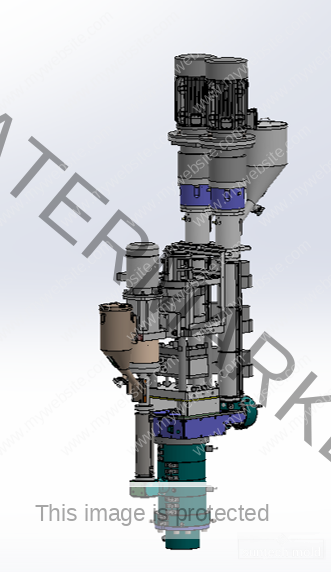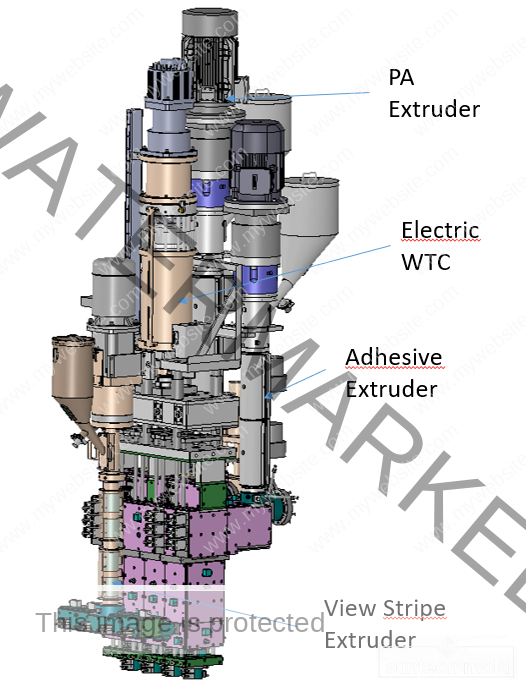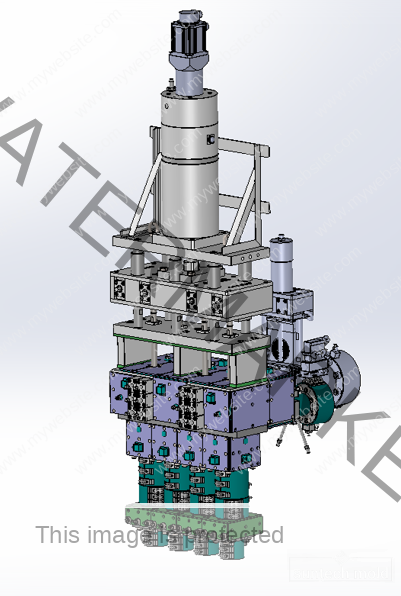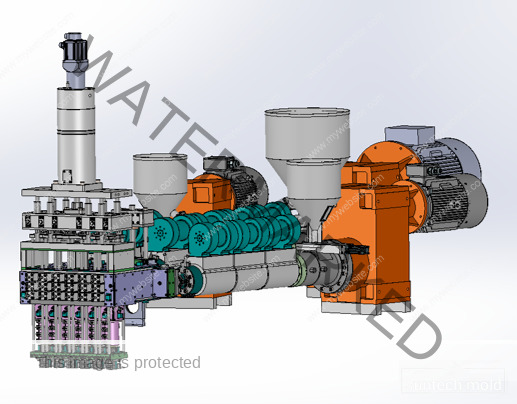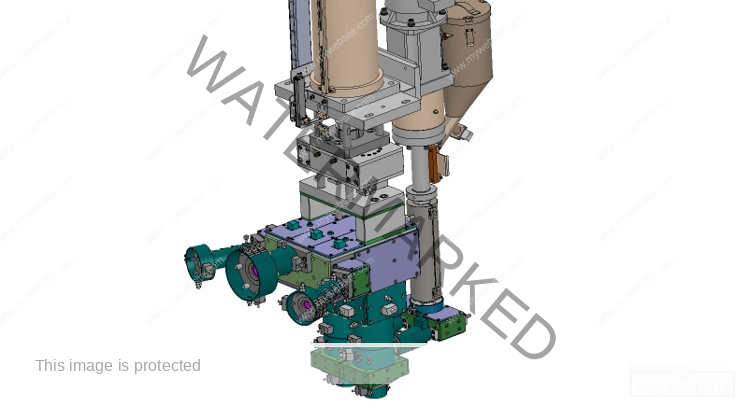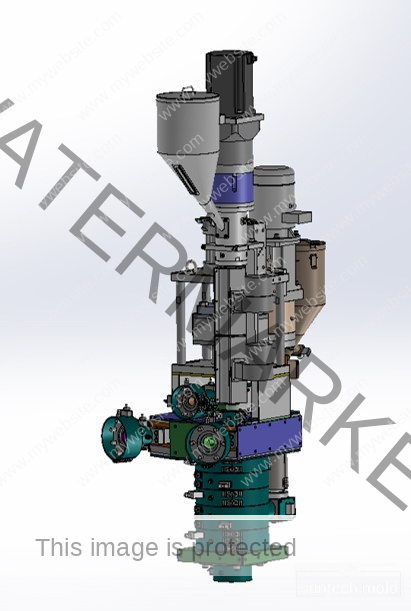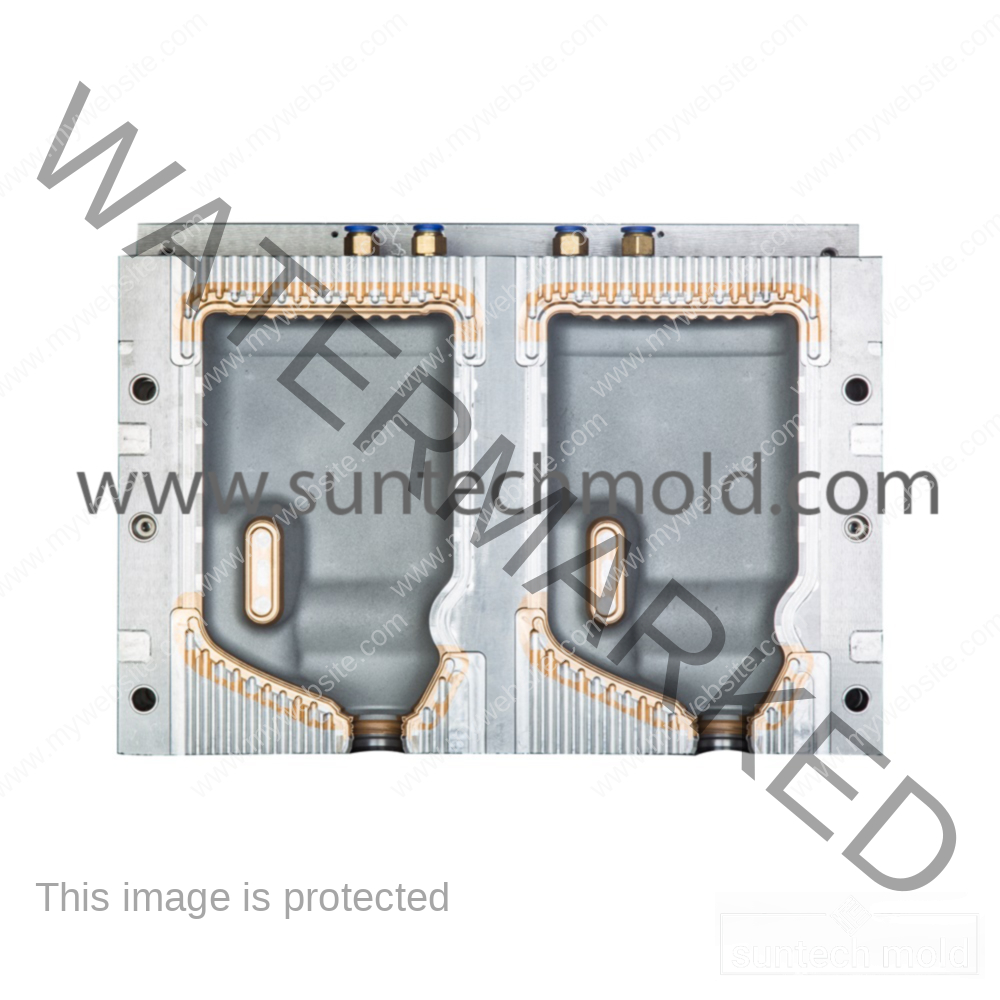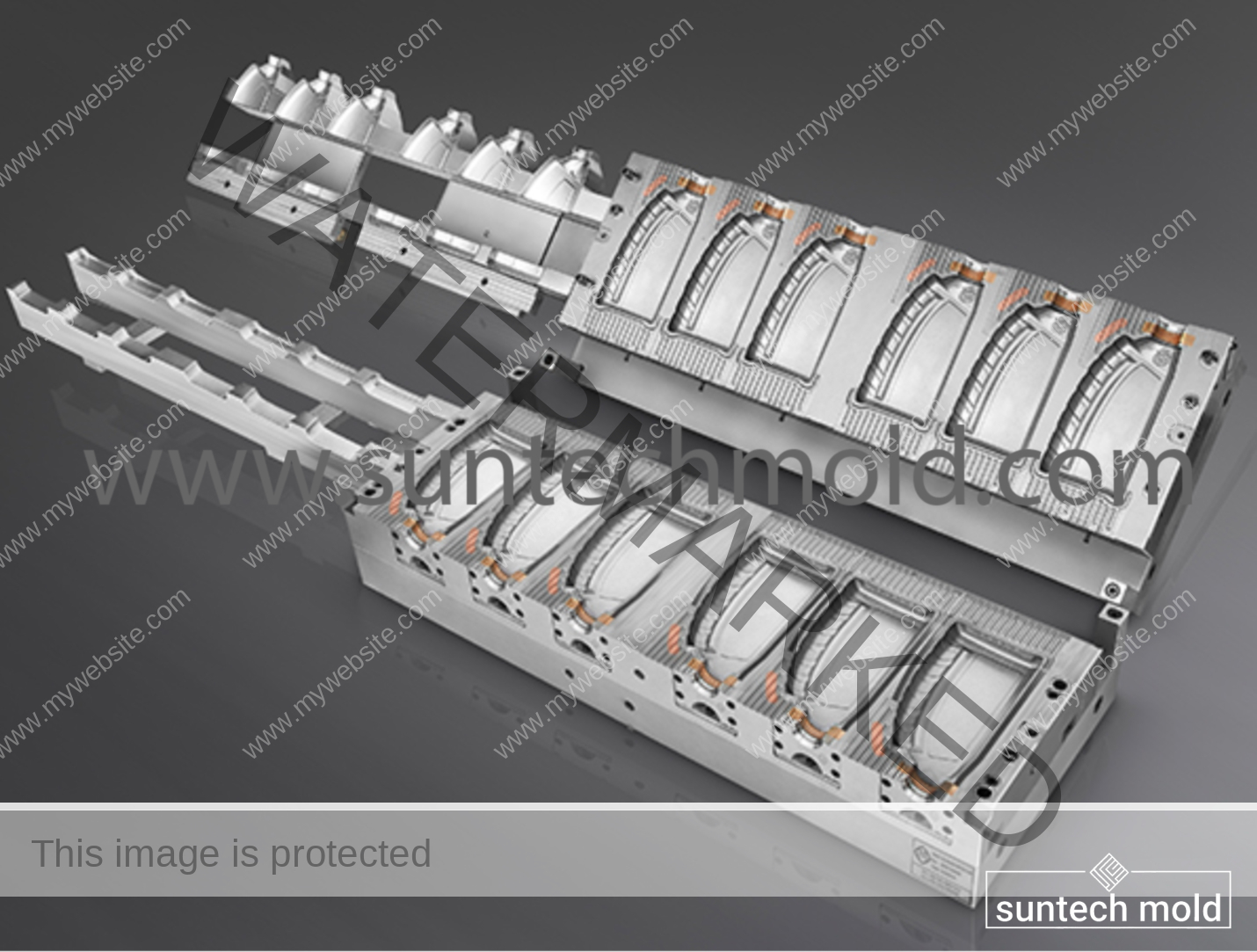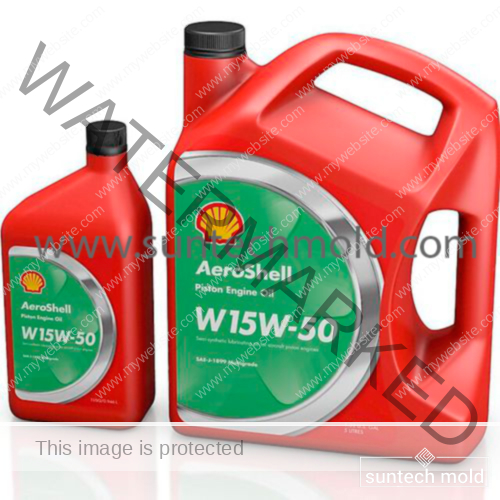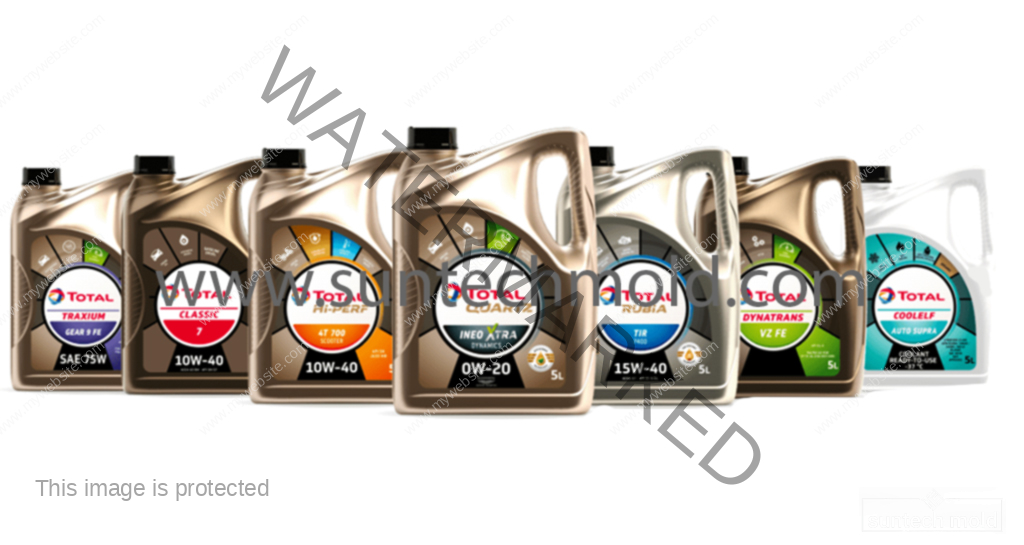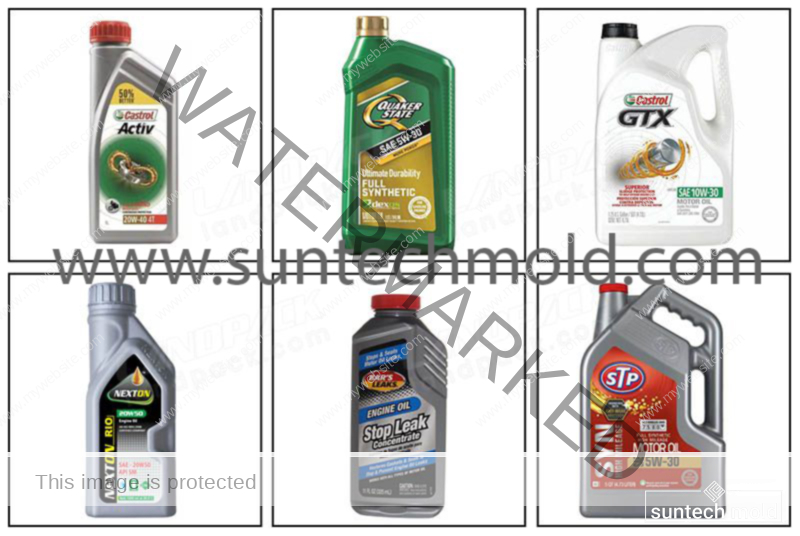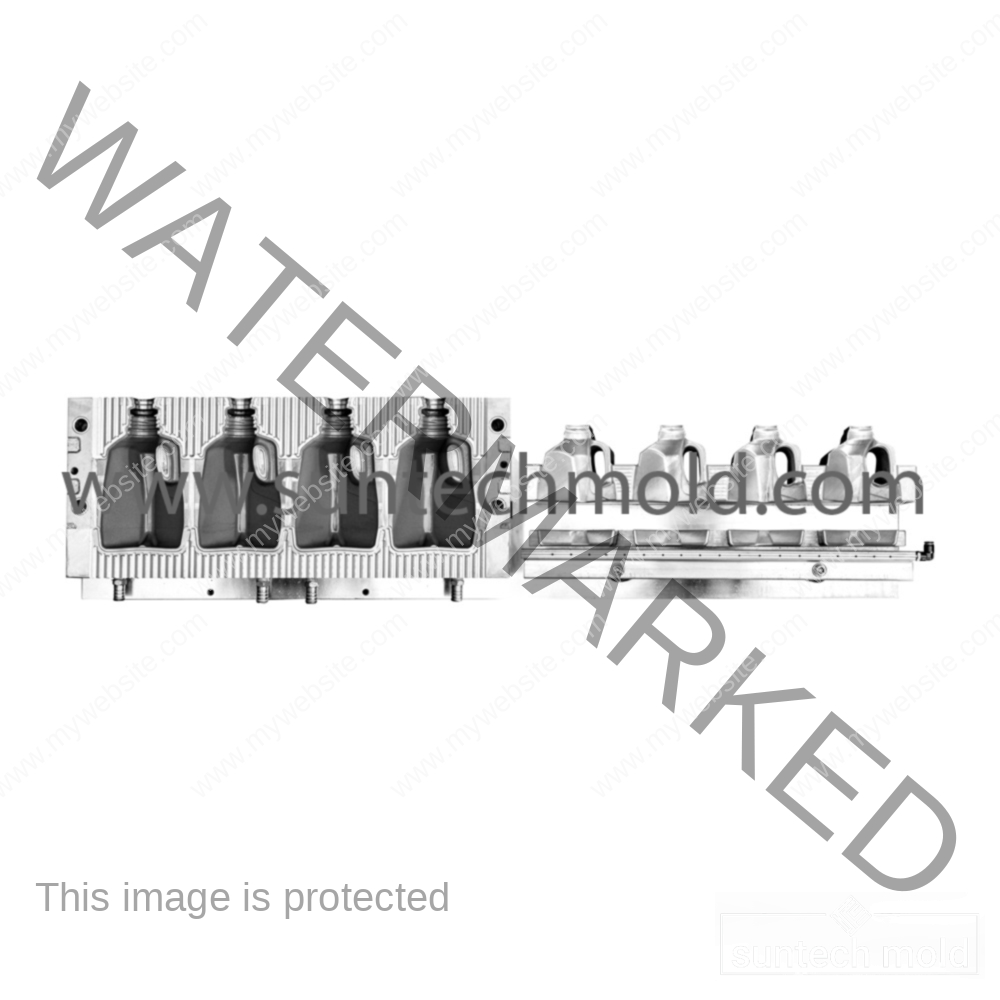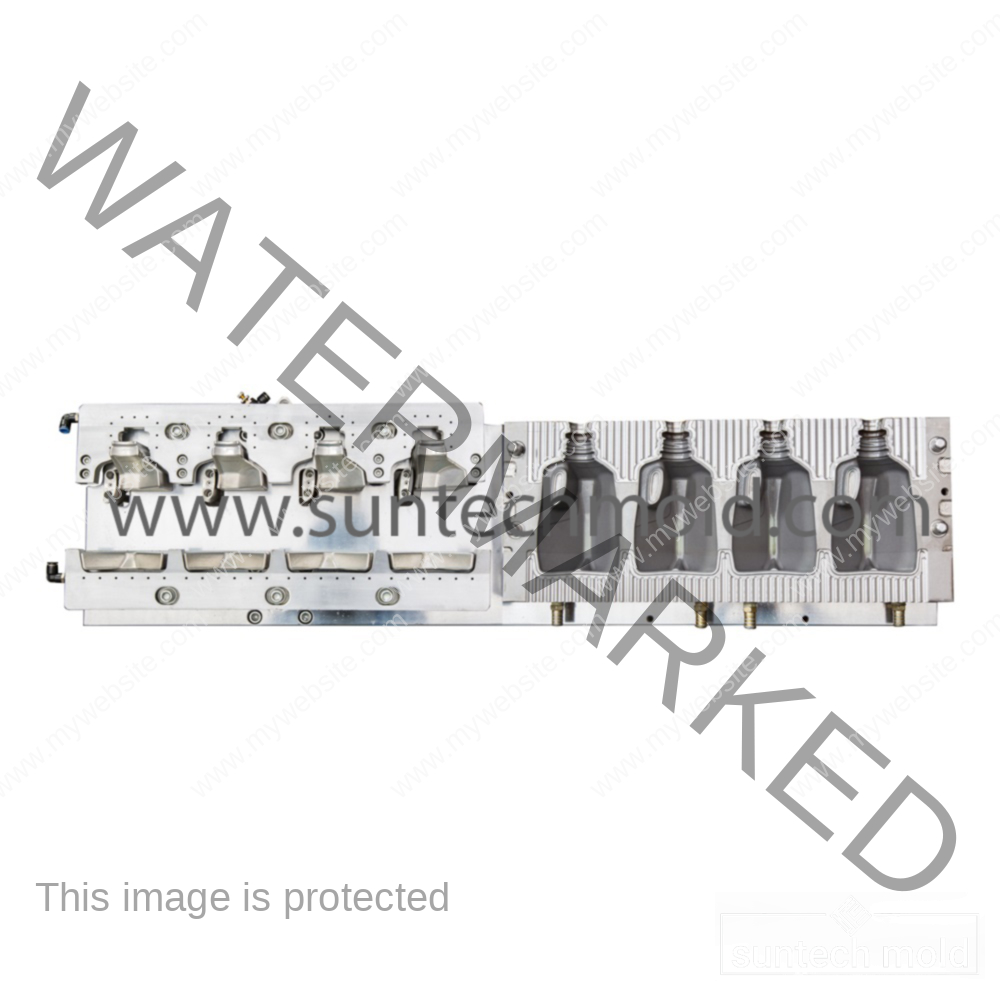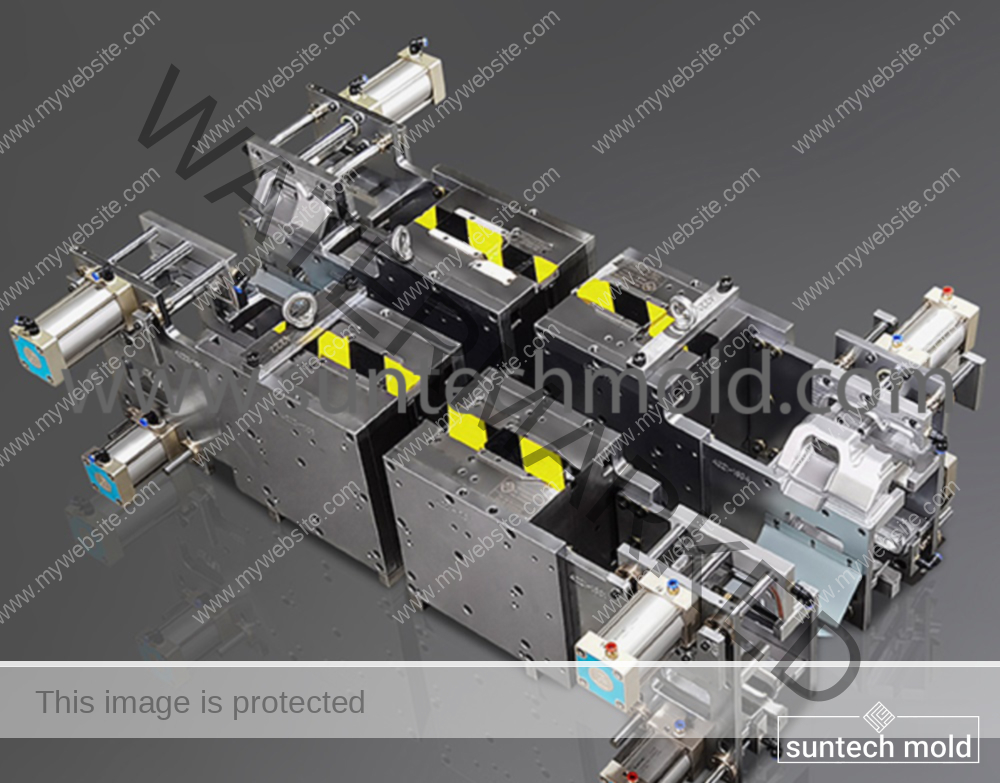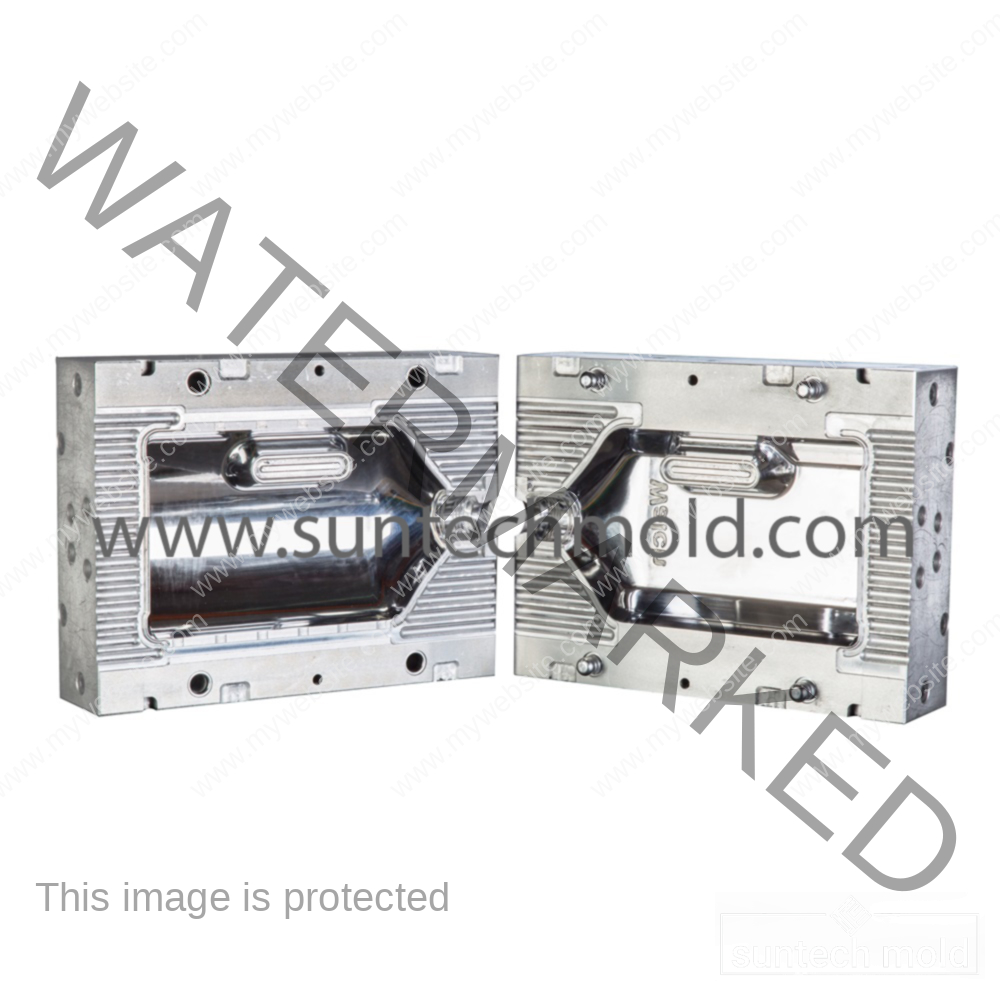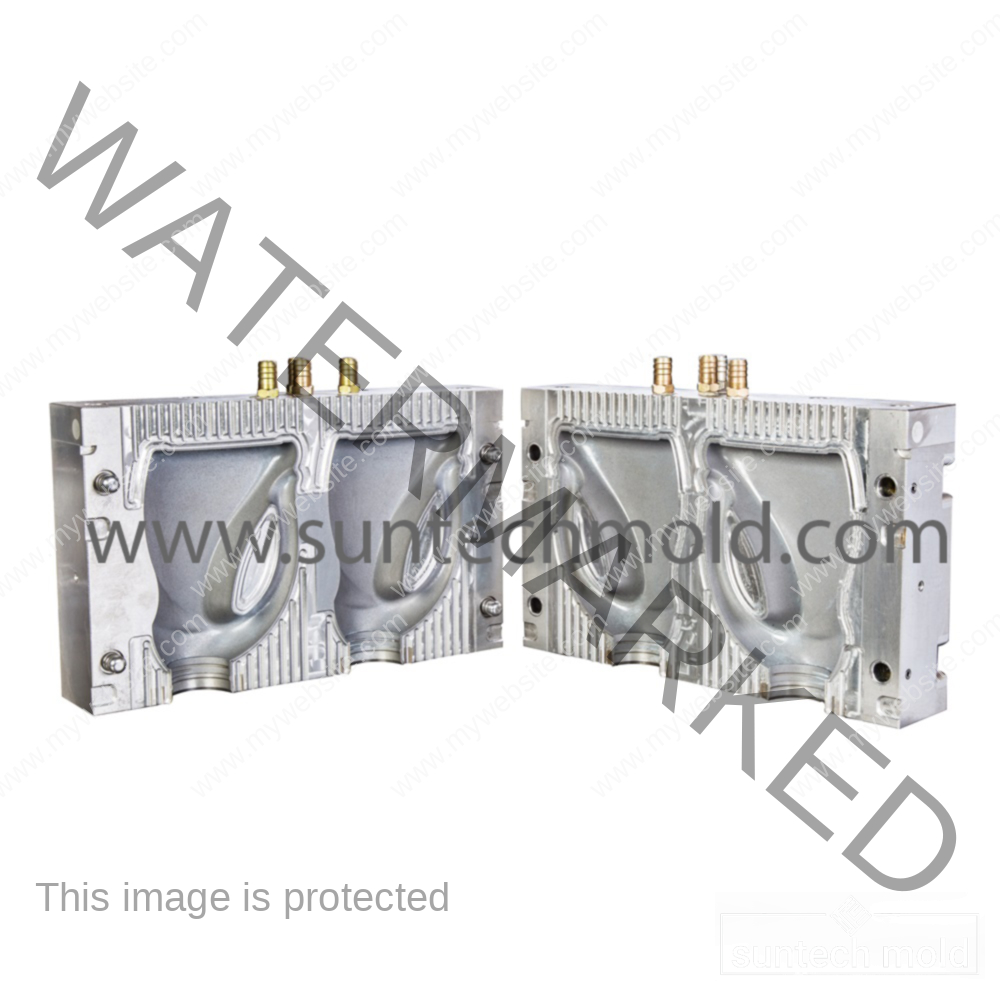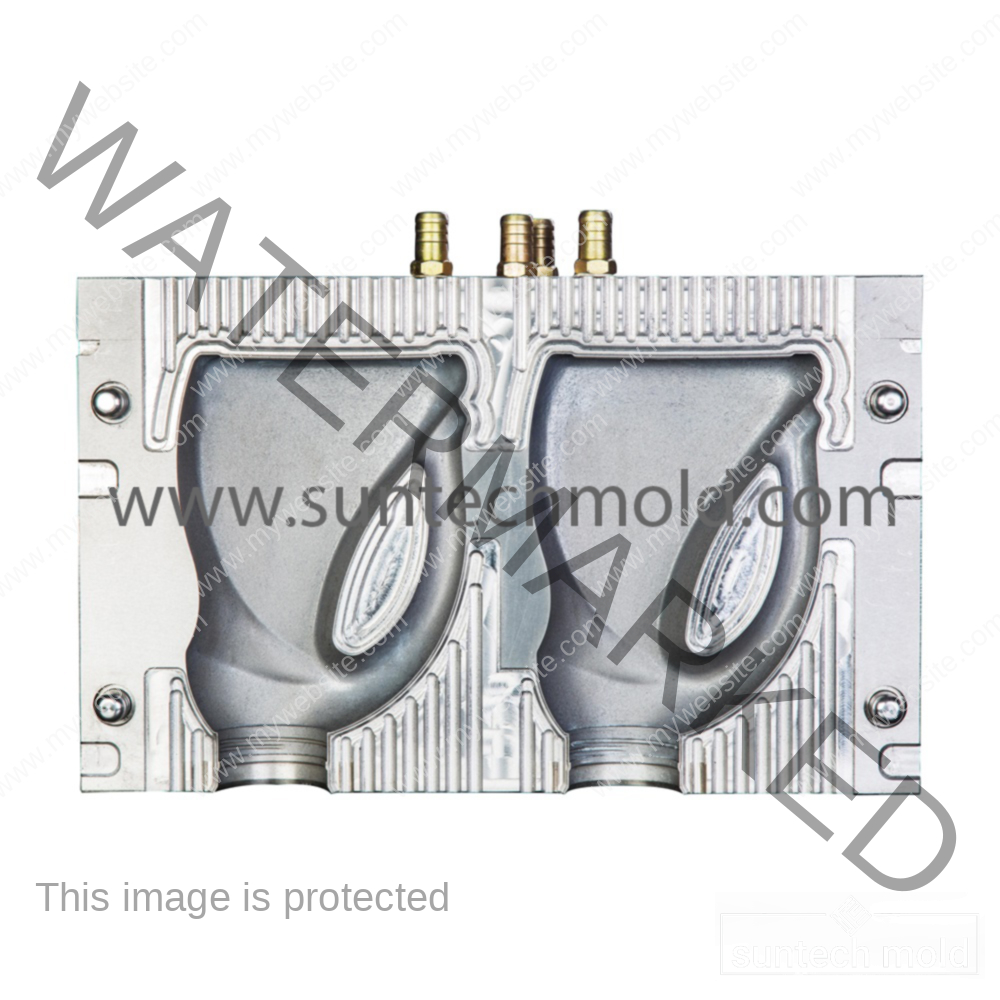Engine Oil Bottle Mold (Suntech)
Are you looking for a durable and efficient solution to shape high-quality oil containers? The Engine oil bottle mold is your ideal choice. Built for strength, accuracy, and repeat performance, this mold supports smooth production of engine oil bottles in various shapes and sizes.
Whether you’re producing bottles in small or large batches, this mold offers flexibility, control, and excellent results every time.
Choosing the Right Blow Molding Method
Before selecting your Engine oil bottle mold, it’s important to understand the different blow molding processes available. Each method serves specific product requirements, and the right choice depends on what you’re making.
Let’s compare the two most common options: Extrusion Blow Molding and Injection Blow Molding.
1. Extrusion Blow Molding
This method starts by extruding a plastic tube (called a parison), which is then inflated inside the mold to form the final shape.
Key Benefits:
-
Works well for large and simple containers
-
Offers fast production speeds for high-volume needs
-
Typically has lower tooling costs
Since it’s a continuous process, extrusion blow molding is ideal for companies that need large numbers of oil bottles quickly. However, it may lead to uneven wall thickness, especially in larger or more complex shapes.
2. Injection Blow Molding
In this process, plastic is first shaped into a preform using injection molding. Then, the preform is reheated and inflated inside a blow mold.
Key Benefits:
-
Produces smooth, high-quality surfaces
-
Provides better control over wall thickness
-
Ideal for smaller bottles with complex shapes
Although this process takes more time and requires two molds, it delivers better dimensional accuracy. If your product needs to look sharp and polished, injection blow molding is likely the better option.
Material Handling and Control
When selecting your Engine oil bottle mold, think about how the material will be handled during the process. Extrusion blow molding offers a continuous flow, making it suitable for simpler, less detailed bottles. On the other hand, injection blow molding allows greater precision, which is better for professional-grade packaging.
Also, the control over material flow in injection blow molding reduces waste. This can help you save money on raw materials in the long run.
Design and Complexity of the Bottle
Do you need a basic square bottle, or does your bottle include a handle, textured grip, or measuring marks? The complexity of the bottle design will affect which molding process you should choose.
-
Use extrusion blow molding for traditional shapes and standard engine oil bottles.
-
Use injection blow molding for modern, branded, or uniquely shaped bottles that need clean lines and exact sizing.
Wall Thickness and Strength
Uniform wall thickness ensures better durability, which is very important for engine oil bottles. These bottles are often stored, stacked, and transported in bulk, so strength matters.
-
Injection blow molding creates more consistent wall thickness.
-
Extrusion blow molding may vary slightly but still works well for most basic designs.
Production Volume and Lead Time
If your goal is to produce thousands of bottles every day, extrusion blow molding will help you keep up with demand. It’s quicker, especially for simple designs. On the other hand, if you’re focused on smaller runs and better quality control, injection blow molding is your best bet.
Keep in mind that extrusion blow molds often take less time to build. Therefore, your production can start sooner.
Cost and Tooling Considerations
Tooling cost is another major factor. Here’s a simple breakdown:
-
Extrusion blow molding: Lower tooling costs because the molds are less complex.
-
Injection blow molding: Higher initial costs since it requires two sets of molds—one for the preform and one for the final bottle.
However, you might recover the higher cost of injection blow molding over time through better material use and less waste.
Common Applications
The Engine oil bottle mold is used in several industries, including:
-
Automotive lubricants
-
Industrial fluids
-
Household oils
-
Motorbike maintenance products
Thanks to its flexibility, you can use it to produce bottles of various volumes, cap styles, and shapes.
Final Thoughts
Choosing between extrusion and injection blow molding for your Engine oil bottle mold comes down to your product needs. If you require fast production of simple bottles, extrusion is the right path. But if you value precision, durability, and premium design, injection blow molding will give you better results.
Either way, using a high-quality Engine oil bottle mold will help your business improve both quality and efficiency. Plus, with customization options available, you can tailor the mold to fit your exact production goals.
Get in touch today to discuss your project or request a quote. We’re ready to help you shape the future of your brand.

